Food and beverage directors oversee the operation of restaurants and other eating establishments. In addition to hiring staff, assigning responsibilities, developing menus, and ordering supplies, food and beverage directors must keep up with trends and standards of quality. A resume is your first impression of a prospective employer. It needs to capture the hiring manager’s attention by conveying your value in a concise and organized manner. A well-written resume will also highlight your skills and accentuate your best qualifications so you can stand out from the crowd. To do that, you must first understand what a hiring manager is looking for when they read resumes. They want to know if you have the proper education, experience, certification, or training based on their job description. If they see those things in your resume, they will be more likely to schedule an interview with you. Keep reading for expert tips on making an effective resume that lands you an interview!
Food and Beverage Director Resume Example
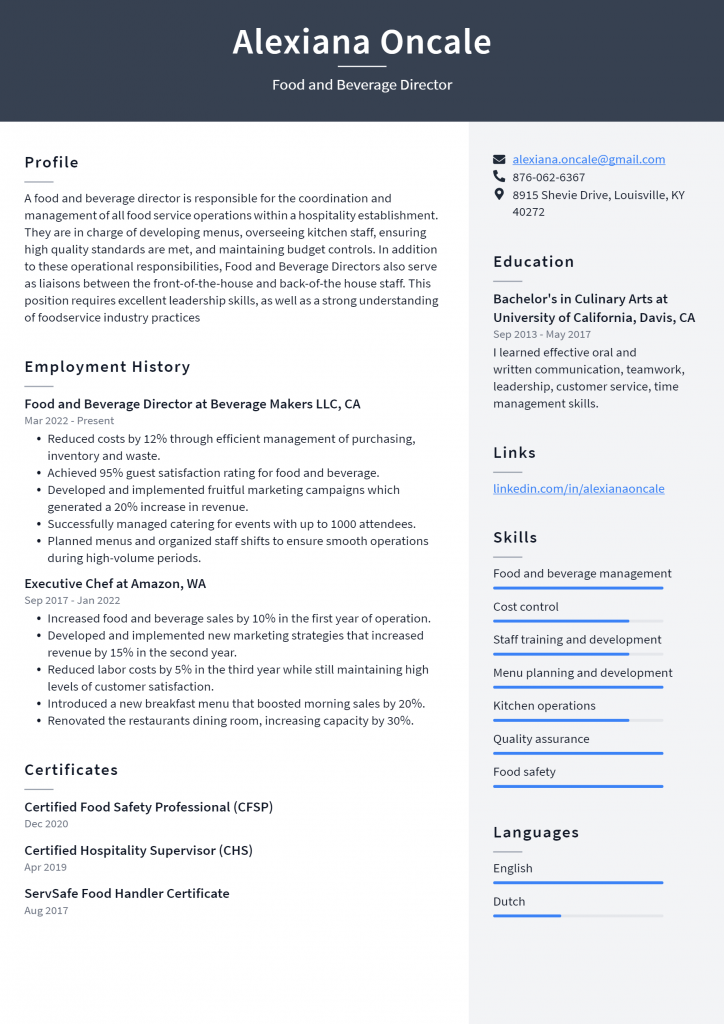
Download This Food and Beverage Director Resume as PDF
Executive Chef Resume Example
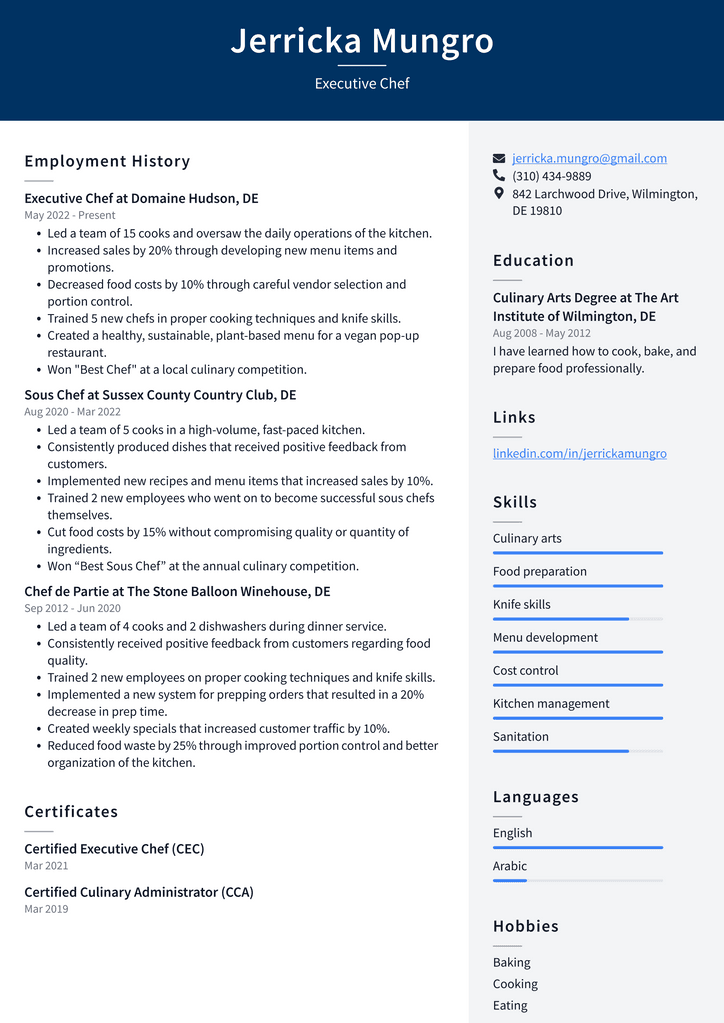
Download This Executive Chef Resume as PDF
Kitchen Manager Resume Example

Download This Kitchen Manager Resume as PDF
Restaurant Manager Resume Example
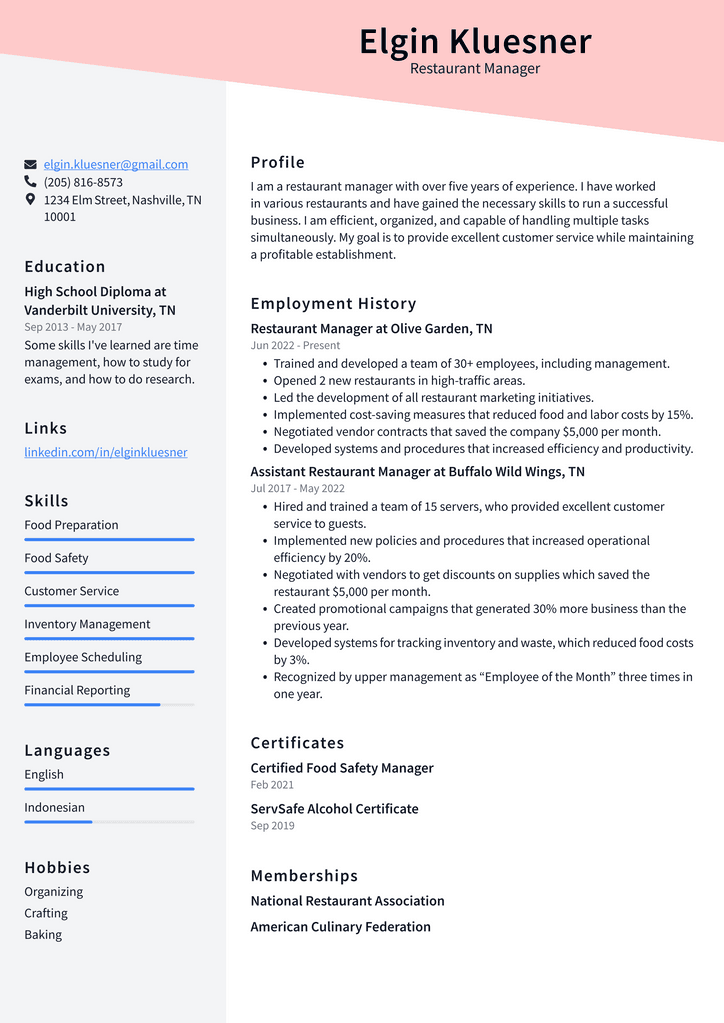
Download This Restaurant Manager Resume as PDF
Sous Chef Resume Example

Download This Sous Chef Resume as PDF
Food and Beverage Manager Resume Example
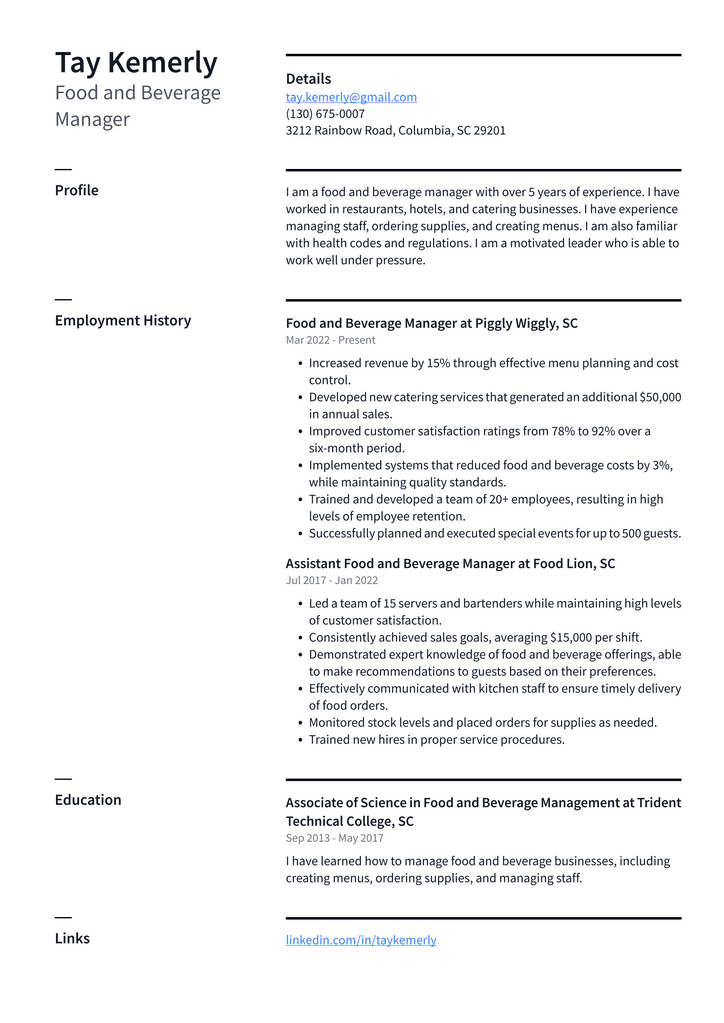
Download This Food and Beverage Manager Resume as PDF
Catering Manager Resume Example
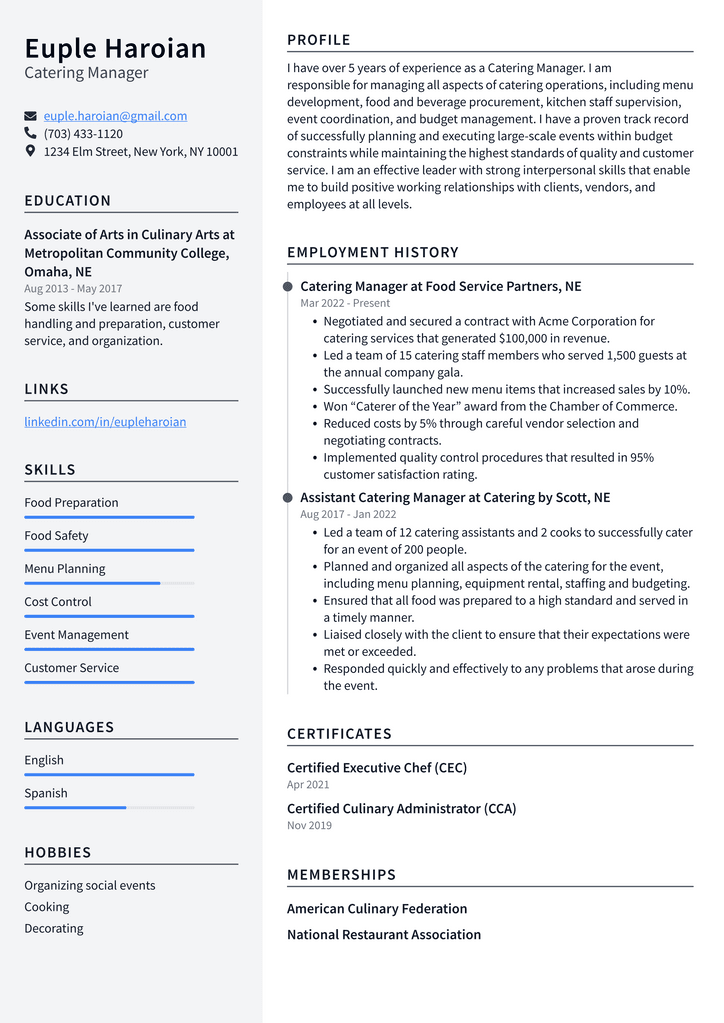
Download This Catering Manager Resume as PDF
Create a Professional Looking Resume
A hiring manager’s first impression of you is a glance at your resume. A well-designed resume highlights your skills, experience, and qualifications and helps you stand out from other applicants. A professional-looking resume may get you an interview even if you don’t have the exact skills a hiring manager is looking for. A hiring manager will likely spend just a few seconds scanning your resume and looking for certain things. Your resume will get more attention if you use certain design elements like margins, headers, and white space. You can also consider including a summary of your skills or achievements. A resume should be between one and two pages and printed on high-quality paper. Ensure your name is at the top left corner, and your contact details are at the bottom correct. Make sure your resume does not have more than two pages and is easy to read. Avoid using lots of jargon and long sentences.
Use action words to show your skills
Employers want to know what you can do for them. They are not necessarily interested in your past job duties. Instead, they want to see what you can do for them if you are hired for the job. To do this, you need to consider your skills, abilities, and achievements related to the job. You can use action verbs in your resume to show your skills and strengths. And remember that you do not need to use your past job duties as verbs. For example, if you were a marketing manager at a computer company, you might use the verbs “managed,” “analyzed,” “advocated,” and “created” to describe your work. If you were a lounge manager at a hotel, you might use the verbs “scheduled,” “trained,” “supervised,” and “created” to describe your work.
Summarize your most important qualifications
A hiring manager will read your entire resume, but she will likely scan it first to get a general idea of your background and qualifications. Therefore, you need to summarize the essential points from your resume in the first paragraph. You can do this by listing your qualifications in bullet points. You can also use numbers or percentages to show the scale of your achievements. For example, if you have work experience, you should list your job title first. Next, you should summarize your responsibilities and achievements in that job. Finally, you should list your education and relevant skills such as languages, computer software, and certifications.
Don’t forget your keywords!
Hiring managers use software to help them scan and select resumes. These software programs look for keywords in your resume that are specific to the job description. If your resume does not have the keywords, the software may eliminate it from consideration altogether. A resume that includes keywords is more likely to end up in the hands of a human being. To find the keywords for a particular job, read the job description carefully. Then, research to find out which skills, education, and certifications are most important for that job. Now you need to find a way to include those keywords in your resume. You can do this by listing your qualifications in summary. Highlight the essential points from your resume in the first paragraph. You can also use numbers or percentages to show the scale of your achievements.
Conclusion
A good resume is your ticket to a job interview. It is the first impression a hiring manager gets of you. A well-written resume will get more attention and higher call-back rates from prospective employers. Now that you know what hiring managers are looking for, it is time to create an impactful resume:
- Start with a clean and professional layout.
- Use action words to show your skills and achievements and summarize your most important qualifications.
- don’tDon’t forget to include the keywords related to the job description for maximum impact.